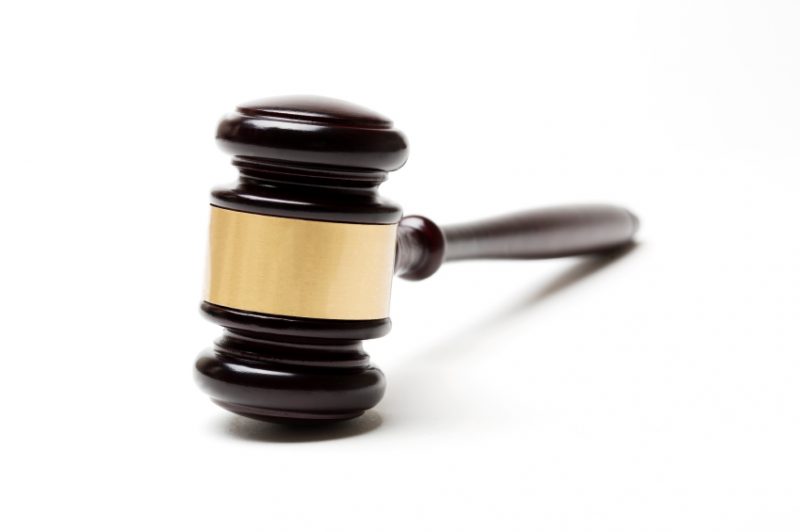
Christine Rafin, Esq. serves as General Counsel – Media at a360 Media, LLC (formerly American Media, Inc.) and is a former partner in the New York City law firm of Kent, Beatty & Gordon, LLP, specializing in technology-related legal issues.
As an attorney specializing in Internet marketing law and litigation, I frequently receive questions relating to the removal of negative, defamatory and/or infringing material from the Internet. Typical questions include:
- An anonymous person is posting defamatory statements about my company. What can I do to find out who it is and put a stop to it?
- A former employee has a blog that frequently vents about our company. Do we have any legal remedies against him?
- My personal photographs are being used online without my permission. How can I get them removed?
As you undoubtedly know, there is a website for pretty much everything. That includes numerous websites that serve as forums for users to post business reviews and others specifically dedicated to business complaints. While individuals have strong First Amendment rights to speak out against businesses (and other people), the line often is crossed when those words are intentionally false.
What is Defamation?
Generally, defamation is a knowingly false statement of fact that is damaging to the reputation of a person or business. There are two types of defamation: spoken (slander) and written (libel). Although it is not currently a legal term of art, a third category of defamation or rather, a sub-category of libel, has emerged in recent years and has been coined “Twibel.” Twibel isn’t strictly limited to libel appearing on Twitter, however. It includes any libelous statement that appears on the Internet in any forum.
Steps to Take When You are a Twibel Target
If defamatory material is posted about you on the Internet and you know – or strongly suspect – who wrote it, you have several options. First, you can contact the person and demand that they voluntarily remove the false statement(s). Often you will get no response. Depending on the perpetrator, this could also lead to additional statements – or your correspondence itself – being published.
I constantly remind my clients to be cautious in what they write in their emails or post on their social media accounts. Anything that you put out into the Internet world can, and often will, be used against you in a way you had never intended. Often a well-written letter from your lawyer is all it takes to have the content removed.
Another option – irrespective of whether the perpetrator is anonymous – is to contact the ISP, website or webhost directly to request that the statements be removed. Of course, this usually is the first step if you cannot identify the person who posted the defamatory statement(s). Always review the relevant website’s Terms to ensure that you understand its required procedure (if it has one), are sending your correspondence to the appropriate contact person, and, if relevant, are citing to a specific violation of that site’s Terms. Depending on the website, webhost or ISP and depending on the content of the statement itself, this may result in the removal of the material or redaction of the worst of it. Otherwise, there may be an automatic refusal to take down or disable access to anything without a court order.
To Sue or Not to Sue….
In many cases, your only option may be to commence litigation. To the extent that the website, webhost or ISP requires a court order before revealing an anonymous user’s identity or removing anything from the website, your task may become more challenging. Your likelihood of success in obtaining the subpoena, identifying the perpetrator and having the content removed will depend on several factors, including the jurisdiction that you’re filing the lawsuit in (and the burden that its laws place on you as the plaintiff), the context of the statement(s) at issue and your status (as a public or a private figure). Depending on the court that you are in, a determination may be made by the judge as to whether you have a valid case – before the court will even consider issuing a subpoena.
One important element to consider before commencing a lawsuit is your ability to prove your damages. In any complex litigation, this may be a daunting task. Establishing reputational damage in a defamation case will often require a good amount of evidence. Depending on the laws of your jurisdiction, if you can establish defamation per se, which includes injurious statements about another’s trade, business, or profession, damages are typically presumed.
No One Wants to Be SLAPPed
In addition to the above-mentioned considerations, before commencing a defamation lawsuit, you should contemplate whether your lawsuit may be challenged as a Strategic Lawsuit Against Public Participation, more commonly known by its acronym, “SLAPP.” A SLAPP is essentially a meritless lawsuit filed against a defendant in retaliation for speaking out on an issue of public concern, such as cases involving celebrities, government officials or large companies. SLAPPs often are filed by a plaintiff with deep pockets with the goal of chilling an individual’s freedom of speech and forcing him or her to incur significant legal fees to defend the case.
In many states that have enacted anti-SLAPP legislation, a SLAPP defendant can “SLAPPback” by, among other things, filing an early motion to strike the complaint or a lawsuit seeking attorneys’ fees and punitive damages for malicious prosecution.
Of course, if your lawsuit is not frivolous and does not implicate a “public” issue, there really should be no SLAPPback concern.
Twibel of a Celebrity: A Case Study
An interesting example tying this discussion together involves the actor, James Woods. In brief, Woods filed a $10 million lawsuit for defamation and invasion of privacy by false light against an anonymous Twitter user who posted a tweet stating that Woods was a cocaine addict. The defendant, sued as John Doe a/k/a “Abe List” (his Twitter handle), promptly fired back with an anti-SLAPP motion. Abe List’s attorneys characterized the tweet as constitutionally-protected speech that is “part of Twitter’s culture of political hyperbole.”
In analyzing the anti-SLAPP motion, the court considered whether Woods established a probability that he would prevail on his defamation claim and specifically addressed the issue of whether the statement could be characterized as an opinion – and, therefore, not defamation – or a statement of fact. In a rollercoaster of a lawsuit, the court issued a tentative ruling indicating that the anti-SLAPP motion would be granted and the case dismissed. However, the judge apparently changed his mind after a hearing, considered the tweet a statement of fact, not opinion, and denied the motion.
Not surprisingly, a legal battle ensued to uncover “Abe List’s” identity. According to the anonymous defendant’s attorney, Abe List died after the lawsuit was filed. Through discovery and motion practice, Woods sought to compel counsel to reveal its client’s identity. Counsel fought back with privacy and attorney-client privilege arguments. The court ordered Abe List’s counsel to identify him and his heirs and personal representative(s). Further, because there was a dispute as to the reality of Abe List’s death itself, the court ordered Abe List’s counsel to provide information about his client’s death.
Getting Rid of All the Rest
If negative material is posted about you or your business and it is not per se infringing, defamatory or otherwise prohibited, there still may be a way to have it removed from the Internet.
Can This Material Be Removed?
In determining the answer to that question, there are several additional questions to consider. Has your business been affected by the content? Has there been any actual harm to your business that you can prove? Have you lost customers or received inquiries that likely stemmed from the negative content?
Depending on your answer, you may be able to convince the webhost/ISP/website to redact some or all the content, particularly if it violates any of the site’s Terms or is particularly objectionable.
Depending on the laws of your jurisdiction and the specific facts of your situation, there may also be potential claims that your counsel could threaten – and prosecute – against the individual, such as intentional interference with prospective business relations, tortious interference with contract, etc.
Removing Infringing Online Material
Whether someone copies and publishes a photograph that you took, a blog post that you wrote or completely mirrors your webpage and passes it off as their own, you have several legal rights. One of the most cost-efficient and expeditious options available to you arises under a federal law known as the Digital Millennium Copyright Act (the “DMCA”). This issue is so important that I have written a separate article about it here: “Legal Options When Battling Online Copyright Infringement”.
Giving Negative Content a Proper Burial
Most people searching the Internet typically don’t click through all the pages of results. They generally review the top results and stop there.
If all else fails, there are ways to bury negative information on the Internet. That generally requires loading the Internet with positive content that will appear in search results about you and your business. Your website, social media accounts and blogs are typically good places to start. Of course, beware of flogs (fake blogs) because they can get you into real trouble. Reputable websites featuring your name/business generally appear at the top of search results. If you are quoted in the media or have been published online or in print, this also is quite helpful in placing good content above the bad. There also are businesses that specialize in bolstering your reputation online, such as Reputation Communications.
Your Online Presence Matters
In sum, it is important to do a thorough online search of your name and company name frequently: for the good, the bad and the ugly. Then it’s imperative to consider the many options available to you.
About the Author

Christine Rafin, Esq. is an attorney specializing in Internet, communications and media law. She is General Counsel – Media at a360 Media LLC (formerly American Media, Inc.) in New York. She co-authored “What to Do When You Are the Victim of Online Defamation,” published here in June 2014.
The information presented is for informational purposes only, is not legal advice, is not to be acted on as such and is subject to change without notice. Each situation is unique, and you should not act or rely on any information contained herein without seeking the advice of an experienced attorney.
Please also see The Essentials: Online Reputation Management FAQs.



